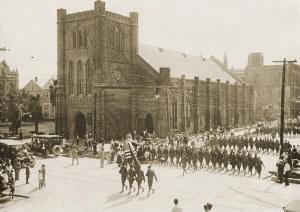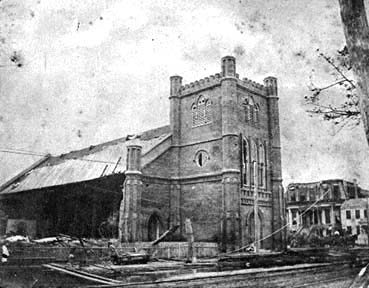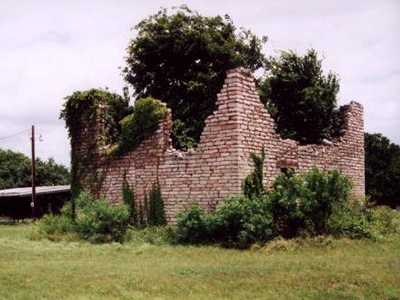Churches Have Been Doing Their Best to Mask Financial Troubles. (original) (raw)
| by Bill Cherry |  |
|---|
While there's reason to question whether it's academically theological, one rather consistent message Western religions infer in their teachings boils down to this: Don't worry about It. As long as we pray about It, we can leave It in God's hands, and everything will be alright.
Many find it troubling to drive by their city's old churches, some ornate and opulent, others designed and built to be clean, pristine and sturdy, and to realize that for years those buildings have been decaying. Each one began as a congruent vision by a handful of people who somehow were able to take that vision and persuade others to support it. With only a wishful concept to sell, they raised the money to eventually construct those enormously expensive buildings. Many have been on their corners for more than 100 years.
The founders were sure that the churchesand ancillary buildings would forever live on to spiritually nourish the community. They felt certain that the generations that followed would keep them up and add to them. Membership and financial support would surely increase exponentially. Those peaceful resolves had to have been the spirit behind each church and synagogue, lest services would have remained in homes, public auditoriums, on street corners and in tents full of folding chairs and cardboard funeral home fans.
The founders would be disappointed if they were here today. As time has passed, the memberships have become lethargic, devotion has declined, and church-family financial support has lost a great deal of its wind. Without the strong membership resolve that the churches had when they were founded, the current congregants find themselves defaulting to that false hope, "We'll leave It in God's hands and everything will be alright."
So while they've been waiting on God to take care of things; rightfully God's been waiting for them to do it. During this standoff, they have masked the structural problems with spackle, caulk, putty and paint. They've hoped that the rats that are eating away at the electrical wiring's insulation won't be electrocuted, thus sending the fire-causing sparks that will destroy the entire campus. And what about the termites and beetles that are digesting the wall framing and roof trusses? Will a wall eventually fall into the yard, they secretly wonder?
For awhile masking the truth has bought time. At least people driving by or going to an occasional wedding or the funeral of a friend haven't noticed that the church was just squeaking by; that year after year there had been no room in the finances to budget for major repairs and improvements; and that church involvement had seriously declined.
But the committed members left behind have known all along, deep in their souls, that the solution would require families to stop just borrowing the facilities when they needed them for weddings and funerals and day school, or every now and then on Sunday, Christmas, Easter, or on Hanukkah and Passover, and to accept their responsibility as owners and members of their church's business partnership.
With this comes an irony that began in Old Testament days. People won't live in or support a community that doesn't have good churches and synagogues. In fact, one of the first questions Realtors have to address when a family is considering moving to a new town is, "Where's my church?" Not necessarily that the family plans to join or attend much less to send a regular contribution or to tithe, but they see it as a good sign that the town isn"t morally corrupt.
Like public parks and government buildings and streets, churchespay no property taxes. It was never meant to be a benevolent financial break for the faithful; instead, it's a subtle encouragement for churchesto exist so that the town has perceived value.

World War I Victory Parade passing the Trinity Episcopal Church in 1918 - Photo courtesy Bill Cherry
One church, Trinity Episcopal Church in Galveston, started in the early 1800s when twelve people raised $4,000 to buy a tract of land and to construct a small frame building. Within a year, a hurricane had come through and blown it off of its foundation. They righted it.
More hurricanes followed, plus a Civil War battle that left a cannon ball buried in its south wall, then the big fire that burned most of downtown, the yellow fever epidemic, the births, marriages and deaths of generations, and the Great Depression, but the members continued building it, adding one brickat a time. Today, the buildings encompass an entire city block. The church is loaded with irreplaceable stained glass windows, a full set of chimes in its belfry, and an organ with more than 4,000 pipes. While there used to be a lot more members, still about two hundred worship there each Sunday. And throughout the week more than 250 children attend its school.

Trinity Episcopal Church - The south wall blown down as the result of the 1900 Storm. Photo courtesy Bill Cherry
Nevertheless this church finds itself in need of $2 million if it is to save its buildings and do no more than continue the visionary mission of its founders of 150 years ago.
While the amount needed for restoration and program continuance surely differs from church to church, the questions are the same and as perplexing. Why does the church need so much? Where will it come from? It is so much because for years the church was unable to save for a rainy day. The congregants, in the main, took out more than they put back in. Many simply took a free ride. And where it will come from is from those who know it's important for the churches to continue their places in the community. Everyone of them prays their collective financial strength will be enough for their church to endure.
A town without good, viable churches and that are without supportive and enthusiastic members is empirically a town in a state of overall decline. That condition is severely costly to the spirit, moral and financial viability of the community. Some say that's where many are today. I�m one of those.
Bill Cherry's Galveston Memories
August 3, 2008 column
Copyright William S. Cherry
All rights reserved
| Related Topics:Texas | Online Magazine | Galveston|Book your hotel here and save: Galveston Hotels Bill Cherry, a Dallas Realtor and free lance writer was a longtime columnist for "The Galveston County Daily News." His book, Bill Cherry's Galveston Memories, has sold thousands, and is still available at Barnes and Noble and Amazon.com and other bookstores. | | | --------------------------------------------------------------------------------------------- | -------------------------------------------------------------------------------------------------------------------------------------------------------------------------------------------------------------------------------------------------------------------------------------------------------------------------------------------------------------------------------------------------------------------------------------------- | |
